Hybrid Electric Vehicles (HEVs) combine an internal combustion engine with one or more electric motors to move the vehicle. Their design goal is to achieve better fuel efficiency and reduce emissions compared to traditional gasoline or diesel-powered vehicles.
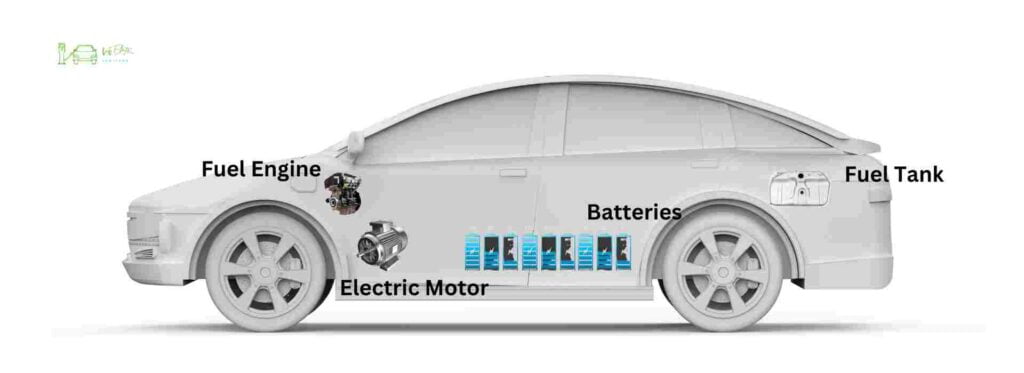
Hybrid mode, where both the internal combustion engine an electric motor work together to provide Power. When more power is required such as during high-speed driving or sudden acceleration, the internal combustion engine kicks in the engine generates Power by burning fuel which provides energy to propel the vehicle and also generates electricity to charge the battery pack. The power split device adjusts the rotation speed and torque distribution between the engine and the motor this allows for efficient blending of power sources based on driving conditions and power demands. The internal combustion engine operates efficiently at higher speeds and power demands where electric motors are less efficient lastly, we have power generation mode which comes into play when the engine’s power output exceeds the immediate need.
There are two types of power generation one from the engine and another from regenerative braking. Here the power split device connects the internal combustion engine to a generator this Excess power is converted into electricity recharging the battery pack for later use and it also generated electricity from regenerative braking, when you apply the brakes in a hybrid vehicle the regenerative braking system engages the rotating Wheels during braking or decelerating drive the electric motor to act as generators converting the kinetic energy of the vehicle into electrical energy the energy captured through regenerative braking helps to recharge the battery pack increasing the overall available energy.
Types of Hybrid Electric Vehicles:
Parallel Hybrid: Both the internal combustion engine (ICE) and the electric motor can directly power the wheels. The most common configuration in passenger vehicles.
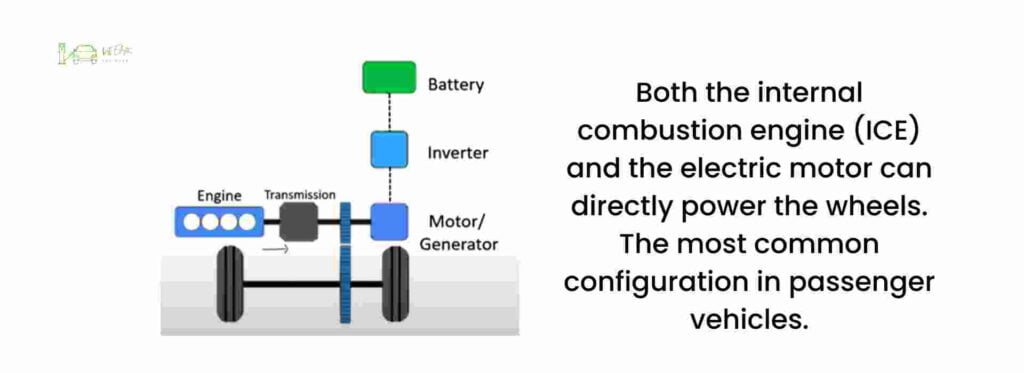
Series Hybrid: The ICE only serves as a generator to charge the battery, and only the electric motor drives the wheels.
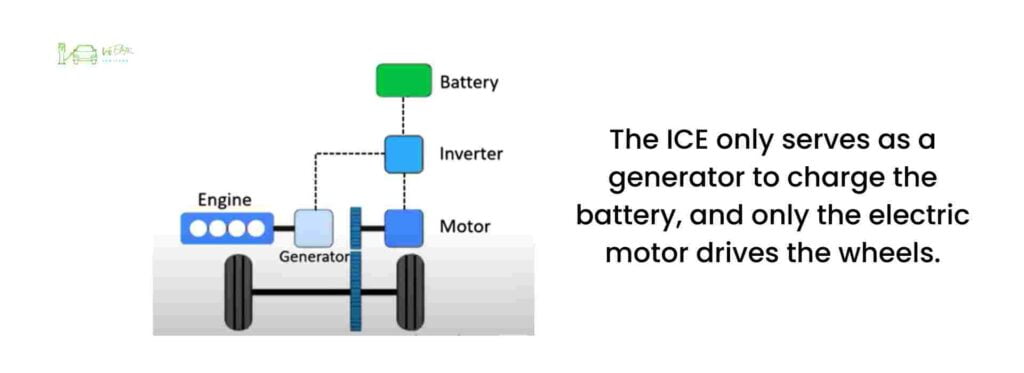
Power-split or Series-Parallel Hybrid: Combines aspects of both series and parallel designs. Toyota’s Hybrid Synergy Drive used in the Prius is a well-known example of this type.
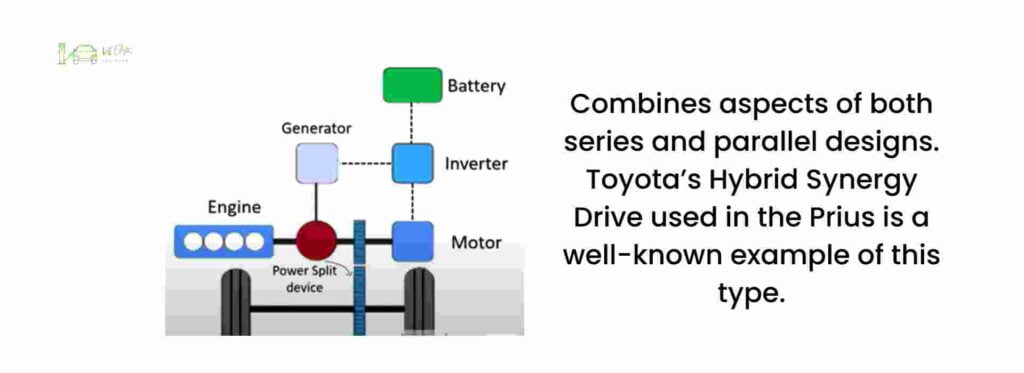
Important Components Of Hybrid Electric Vehicles
Battery Pack: HEVs have a battery pack, typically nickel-metal hydride (NiMH) or lithium-ion (Li-ion), which stores energy for the electric motor. This battery is recharged through regenerative braking and by the internal combustion engine.
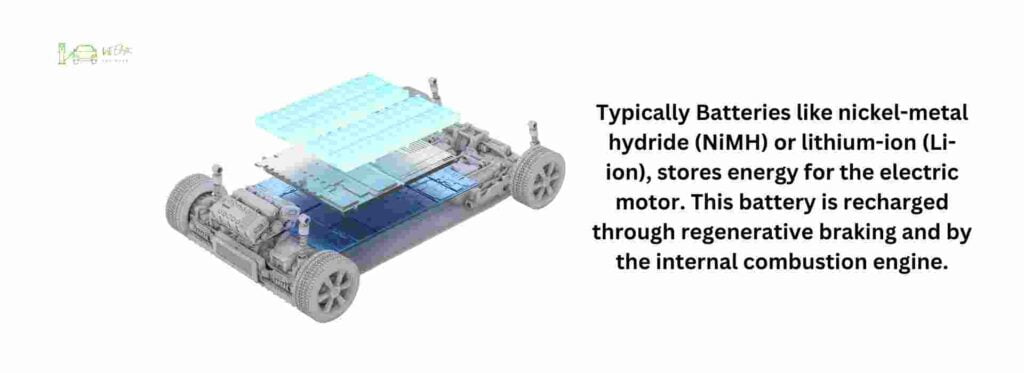
Regenerative Braking: Instead of wasting the kinetic energy during braking as heat, regenerative braking captures some of that energy and uses it to recharge the vehicle’s battery.
Internal Combustion Engine (ICE): HEVs have smaller and more efficient ICEs than traditional vehicles because the electric motor assists during peak power needs, like during acceleration.
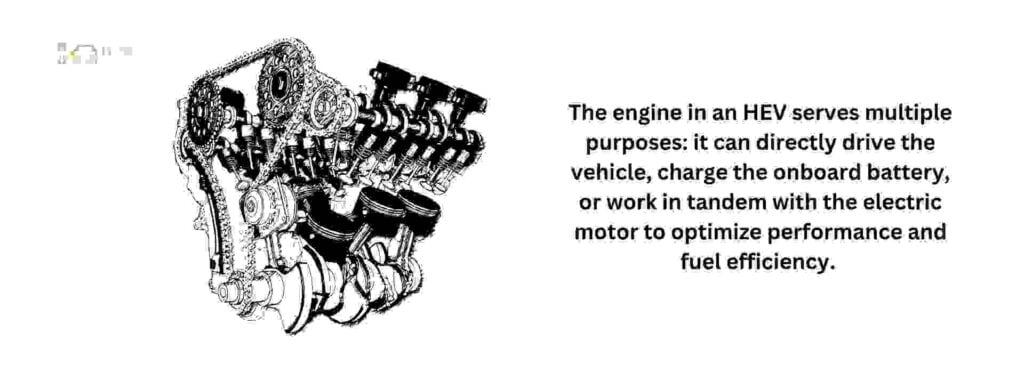
Electric Motor: Provides additional power during acceleration and can drive the vehicle at low speeds. It assists the ICE, allowing for a smaller, more fuel-efficient engine.
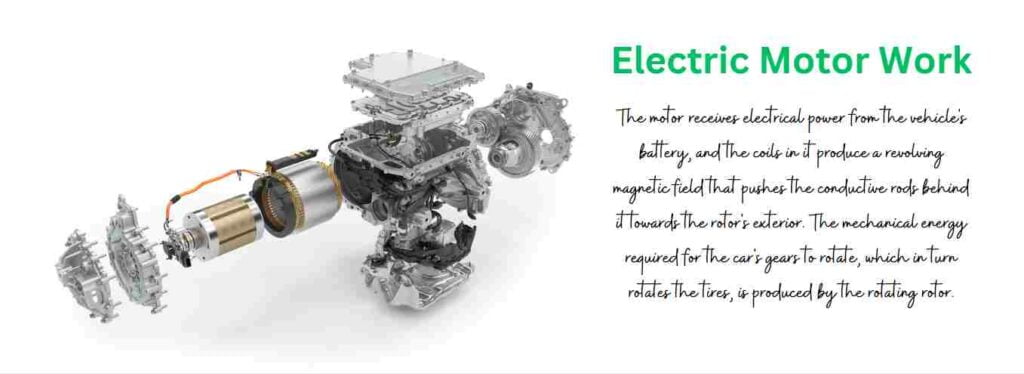
Fuel Efficiency
Because HEVs use both an ICE and an electric motor, they generally achieve better fuel economy compared to their non-hybrid counterparts. This leads to fewer emissions and lower fuel costs.
Emissions
HEVs typically produce fewer greenhouse gas emissions and pollutants than traditional vehicles.
Electric-Only Mode
Some HEVs can run in an electric-only mode for short distances, but they are primarily designed to use both the engine and electric motor in tandem for best efficiency.
No Plug-In Required
Traditional HEVs do not need to be plugged into an electrical outlet to charge the battery. However, plug-in hybrid electric vehicles (PHEVs) are a different category that allows for extended electric-only range by plugging into an external power source.
Cost
Historically, HEVs were more expensive than their gasoline counterparts. However, as technology has improved and production scales have increased, prices have come down.
Maintenance
HEVs often require less frequent maintenance for the braking system due to regenerative braking. The ICE still requires regular maintenance, but the overall maintenance can be reduced in some cases.
Conclusion
Overall the motor battery and engine in hybrid cars work collaboratively to provide the right amount of power depending on driving conditions and Driver inputs this combination of components allows hybrid cars to achieve improved fuel efficiency reduced emissions and a balance between electric and internal combustion power sources.
The automotive market has seen a rise in the popularity of fully electric vehicles (EVs) alongside HEVs. While HEVs are a transitional technology that offers many benefits, many believe that the future lies with EVs, especially as battery technology improves, charging infrastructure expands, and the electric grid becomes greener.







